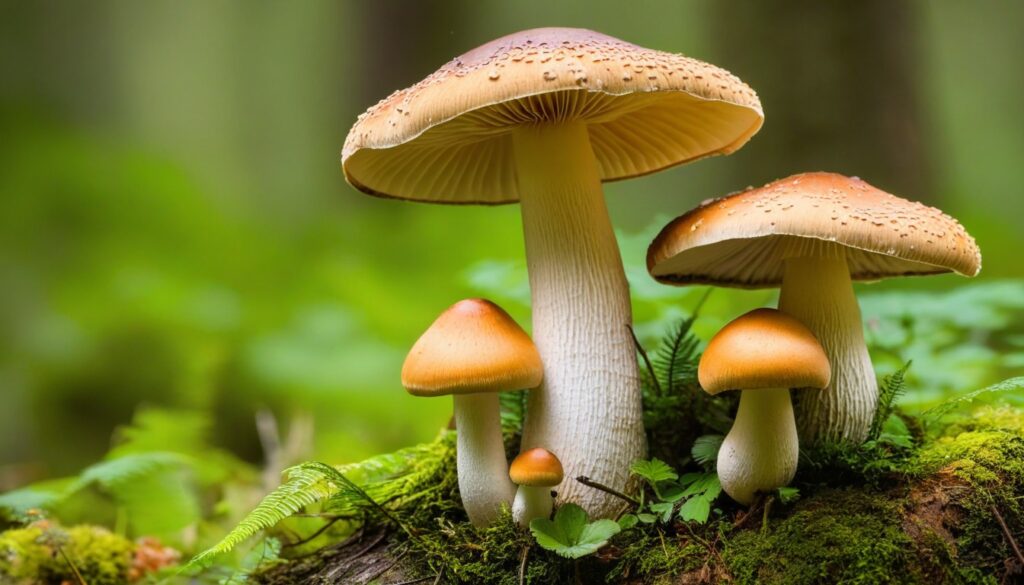If you’re a nature lover and a foodie, there’s no better way to enjoy your passions than mushroom foraging in Michigan. Michigan’s abundant forests offer a diverse array of edible mushrooms that are just waiting to be discovered. However, foraging for mushrooms can be challenging, and you need to arm yourself with the right knowledge before you head out.
In this forager’s guide, we’ll take a deep dive into the world of edible mushrooms in Michigan. We’ll cover everything from the different types of mushrooms you can find to the best foraging areas in the state. You’ll also gain insight into helpful tips and tricks that will help you forage like a pro and return home with a basket full of tasty and safe-to-eat mushrooms.
Key Takeaways:
- Michigan offers a diverse array of edible mushrooms for foragers.
- Safe mushroom foraging practices are essential.
- Many popular mushrooms, including Morels, Chanterelles, and Hen of the Woods, grow abundantly in Michigan forests.
- Michigan’s national forests and state parks present prime foraging locations.
- Successful mushroom foraging requires knowledge of mushroom identification, safe practices, and foraging techniques.
Types of Edible Mushrooms in Michigan
If you’re a mushroom lover in Michigan, you have access to a variety of tasty edible mushrooms that grow abundantly in the state’s forests. Here are some of the most popular types and what makes them unique:
|
Mushroom |
Distinctive Characteristics |
Typical Habitat |
|---|---|---|
|
Morels |
Distinct honeycomb cap, earthy and nutty flavor |
Found under May-apple and tulip trees or in burn areas in spring |
|
Chanterelles |
Bright golden color, delicate and fruity flavor |
Grow near oaks, beech, and birch trees, as well as mossy areas in late summer and fall |
|
Hen of the Woods |
Large clusters, earthy and meaty flavor |
Found around oaks, elms, and maples in late summer and fall |
In addition to these popular varieties, other edible mushrooms found in Michigan include Chicken of the Woods, Lion’s Mane, and Bear’s Head Tooth. Each has its unique flavor profile and growing conditions, making mushroom foraging in Michigan a truly diverse experience.
Safe Mushroom Foraging Practices in Michigan
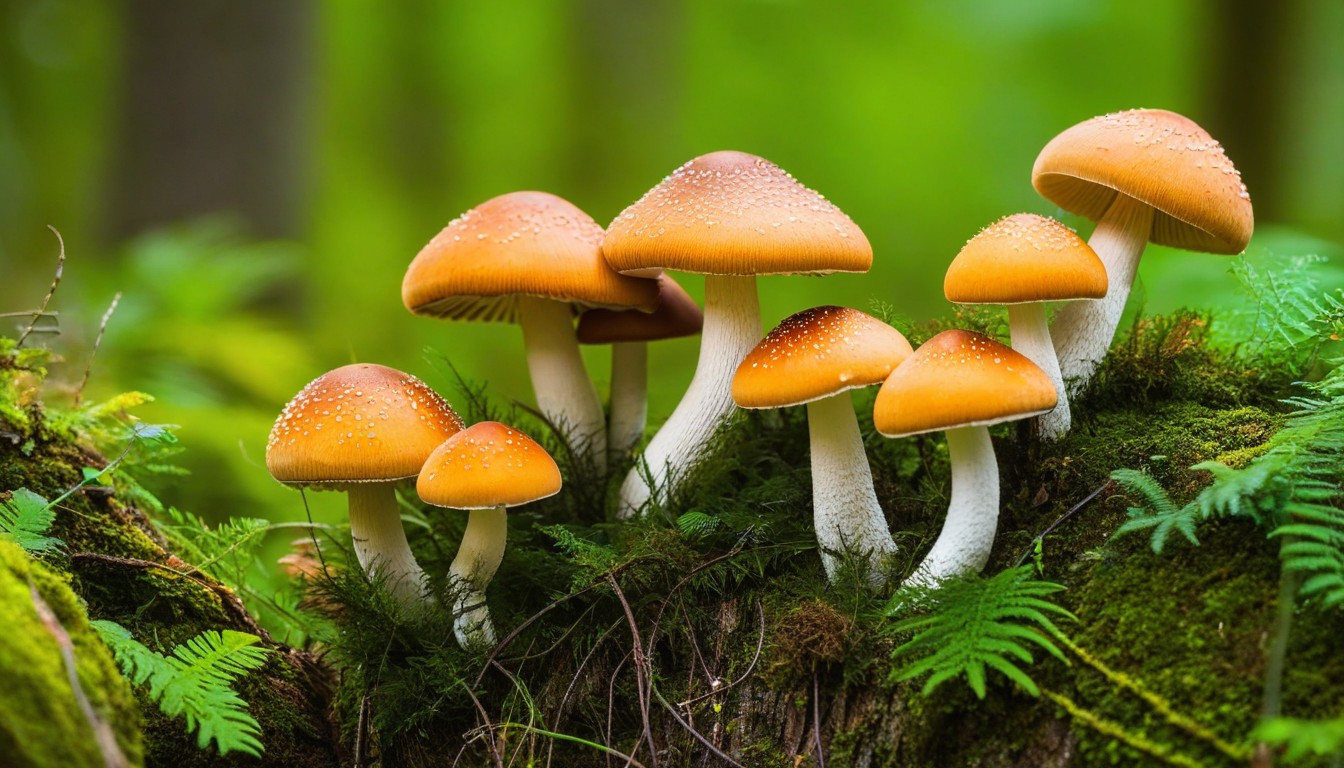
Before you start your mushroom foraging adventure in Michigan, it’s crucial to know the safe practices to follow. Here are some essential tips to keep in mind:
Identify edible mushrooms
Differentiating edible mushrooms from poisonous ones can be a daunting task. It’s crucial to identify the specific mushroom species accurately to avoid any harmful effects on consumption. You can seek help from field guides or professional foragers for guidance.
Beware of poison look-alikes
Many species of poisonous mushrooms resemble edible mushrooms, making it difficult for mushroom hunters to distinguish them. To avoid mishaps, compare the mushrooms you have gathered to the pictures of the edible varieties in a guidebook or online.
Adopt sustainable harvesting techniques
Overharvesting and improper picking techniques can lead to the destruction of mushroom habitats in the forests. To maintain ecological balance and minimize the impact on the environment, use sharp knives to cut the mushrooms at the base of the stem instead of Yanking them out.
“Always avoid taking more than you will use and work to leave enough to ensure future mushroom generations.”
Wear Proper clothing and equipment
As you venture into the outdoors, wear protective clothing to keep your skin covered. It’s also essential to bring a basket or mesh bag to transport your findings and avoid the accumulation of moisture that could spoil and destroy the harvested mushrooms. Don’t forget to pack a compass or map, a flashlight, and a first aid kit in case of an emergency.
“Safety is key while mushroom hunting, so always be prepared.”
Best Locations for Mushroom Foraging in Michigan
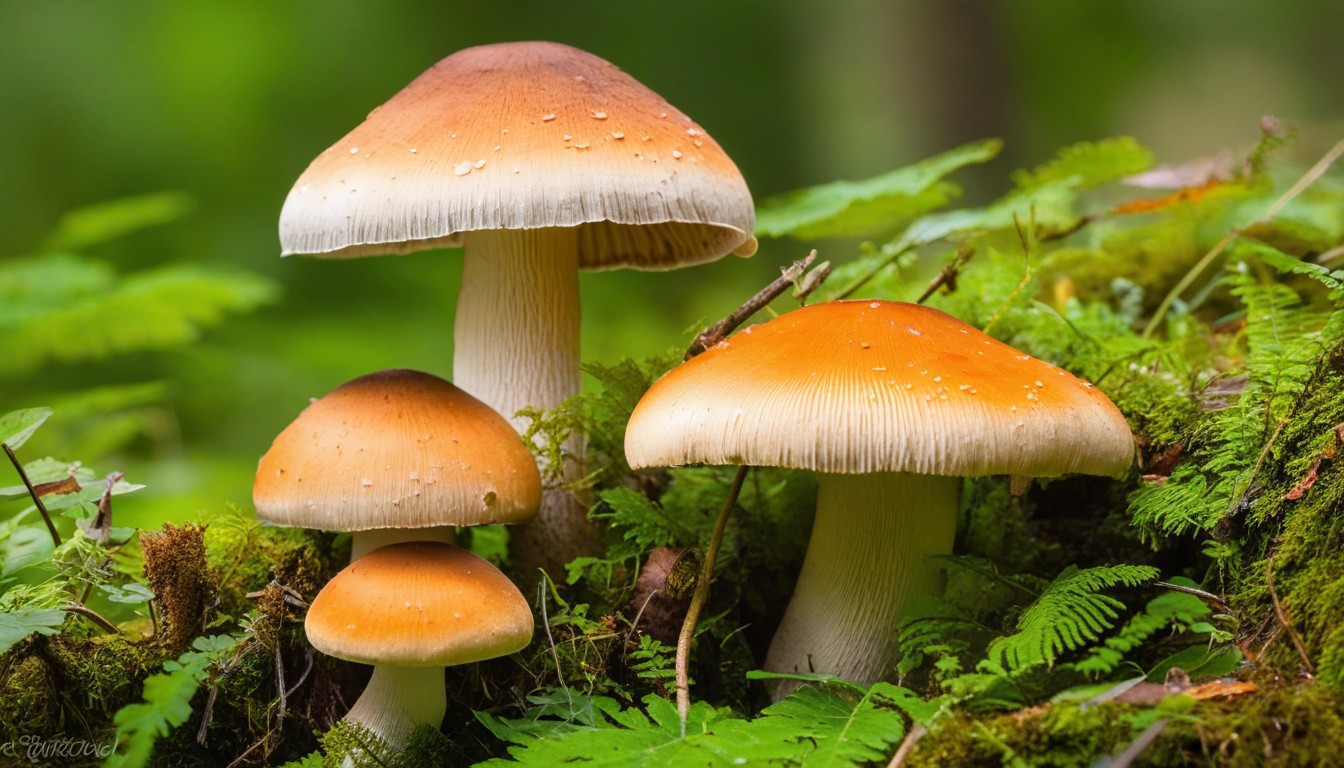
If you’re looking for prime mushroom foraging locations in Michigan, you’ll be spoiled for choice. From the dense forests of the Upper Peninsula to the rolling hills of the Lower Peninsula, Michigan is a mushroom hunter’s paradise. Here are some of the best places to explore:
|
Location |
Key Mushroom Varieties |
Additional Features |
|---|---|---|
|
North Manitou Island, Sleeping Bear Dunes National Lakeshore |
Morels, Chanterelles |
Scenic views, hiking trails |
|
Porcupine Mountains Wilderness State Park |
Chanterelles, Hen of the Woods, Lobster Mushrooms |
Waterfalls, rustic cabins for rent |
|
Huron-Manistee National Forests |
Morels, Chanterelles, Chicken of the Woods |
Over 330 miles of hiking trails, rivers and streams for fishing |
|
Hiawatha National Forest |
Morels, Chanterelles |
Boating, fishing, and camping opportunities |
|
Pictured Rocks National Lakeshore |
Black Trumpets, Morels |
Colorful sandstone cliffs, waterfalls, and beaches |
It’s crucial to note that mushroom foraging is only permitted in designated areas of these parks and forests, so check with the relevant authorities before setting out.
Pro tip: Fall is typically the best time to forage for mushrooms in Michigan, especially after a heavy rain.
Morels: Michigan’s Most Coveted Mushroom
Morel mushrooms are a highly coveted delicacy among foragers and chefs alike, and lucky for us, Michigan is a prime location for their growth. These delectable mushrooms have a distinctive cone-shaped cap with a honeycomb-like texture and they typically grow in springtime under the cover of recently burned forests, along river banks, or near dead trees.
If you’re planning to go on a Morel hunt, it’s important to be equipped with the necessary knowledge to find them. Morels thrive in areas with moist soil and a moderate climate. Look for south-facing slopes and areas with plenty of light, as that’s where they tend to grow. Be sure to bring a basket or mesh bag to collect them, and avoid using plastic bags as they can hold in moisture, causing the mushrooms to deteriorate quickly.
Once you’ve harvested your Morels, there’s no shortage of delicious recipes to prepare them. Try sautéing them in butter and garlic, or incorporating them into a creamy pasta sauce. You can also add them to omelets, soups, or even pizza for a unique and flavorful twist.
“Morels are a highly coveted delicacy among foragers and chefs alike.”
Morel Hunting Tips:
- Look in recently burned-down forests or near dead trees.
- Focus on areas with moist soil and moderate climate.
- Search for south-facing slopes and areas with light.
- Avoid using plastic bags to collect them.
Chanterelles: Delicate Beauties of Michigan’s Forests
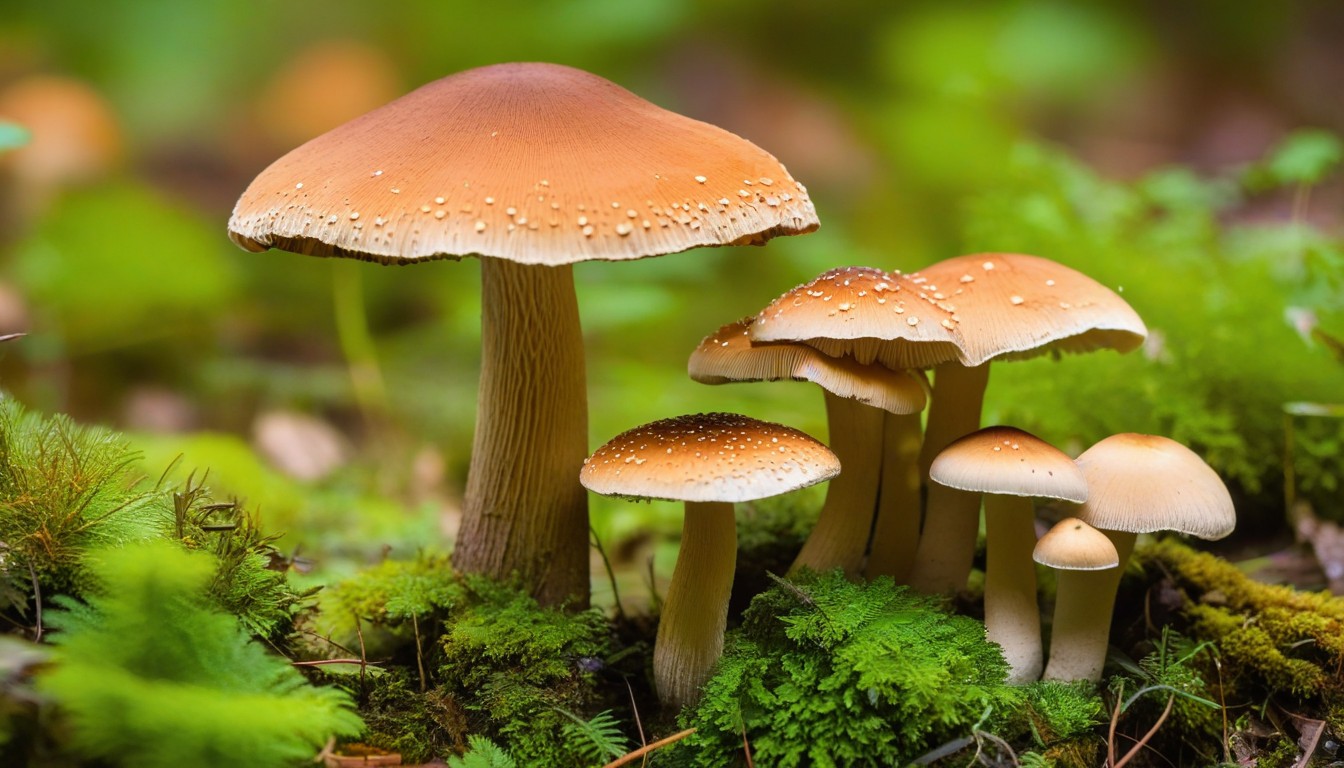
Chanterelle mushrooms are a prized delicacy widely found in Michigan’s forests. These delightful mushrooms have a delicate, fruity aroma and a striking golden color that sets them apart from other mushrooms.
The prime locations to find Chanterelles are mixed forests, especially those with pine and oak trees. You may discover them growing around July and August, usually after a rainfall, in areas with high humidity.
Chanterelles can be used in a variety of dishes, such as sautéed with butter or added to soups, stews, and sauces. They also pair well with meats and vegetables. Try using them in a creamy pasta sauce or as a topping for pizza.
Chanterelles in Michigan: Quick Facts
|
Scientific Name |
Common Name |
Harvesting Season |
|---|---|---|
|
Cantharellus cibarius |
Chanterelle |
July to August |
“Chanterelles are like gold in the mushroom world, and harvesting them is a satisfying experience that connects you with nature.” -Kathy Y., Michigan forager.
Remember to handle Chanterelles with care, using a soft brush to remove any dirt or debris. Always verify the mushrooms’ characteristics, looking for their signature funnel shape and ridges, to differentiate them from poisonous mushrooms.
Michigan’s forests are full of hidden treasures, and Chanterelles are just one of them. Keep exploring, and who knows what culinary delights will cross your path. Happy foraging in Michigan’s forests!
Hen of the Woods: A Meaty Delight in Michigan
Hen of the Woods mushrooms, also known as Maitake, are a flavorful and nutritious delicacy found in the forests of Michigan. These large, frilly mushrooms have a distinct meaty taste and are highly prized by chefs and foragers alike.
Aside from their delicious flavor, Hen of the Woods mushrooms are also packed with health benefits. They are rich in essential vitamins and minerals like Vitamin D and potassium, and have been shown to boost immunity and fight inflammation.
To find Hen of the Woods mushrooms in Michigan, look for them growing at the base of hardwood trees like oaks and maples. They typically appear in late summer or early fall and can be easily recognized by their unique appearance and size.
Savory Hen of the Woods Recipes
Here are some delicious and easy recipes that showcase the flavor of Hen of the Woods mushrooms:
|
Recipe |
Ingredients |
Instructions |
|---|---|---|
|
Hen of the Woods Tacos |
Hen of the Woods mushrooms, tortillas, avocado, cilantro, lime |
Sauté sliced Hen of the Woods mushrooms in olive oil until tender, then serve with warm tortillas, diced avocado, chopped cilantro, and a squeeze of lime juice. |
|
Hen of the Woods Risotto |
Arborio rice, vegetable broth, Hen of the Woods mushrooms, Parmesan cheese, butter |
In a large saucepan, sauté Arborio rice in butter until lightly toasted. Slowly add vegetable broth and stir constantly until rice is tender. Add in sliced Hen of the Woods mushrooms and grated Parmesan cheese, then cook for an additional 5 minutes until cheese is melted and mushrooms are tender. |
|
Grilled Hen of the Woods Steaks |
Hen of the Woods mushrooms, garlic, olive oil, salt, pepper |
Cut Hen of the Woods mushrooms into thick slices and brush with a mixture of garlic, olive oil, salt, and pepper. Grill over medium-high heat until tender and slightly charred, then serve as a vegetarian “steak” with your favorite sides. |
With their unique flavor and texture, Hen of the Woods mushrooms are a true culinary delight that any mushroom forager in Michigan should add to their list of must-try varieties.
Lesser-Known Edible Mushrooms of Michigan
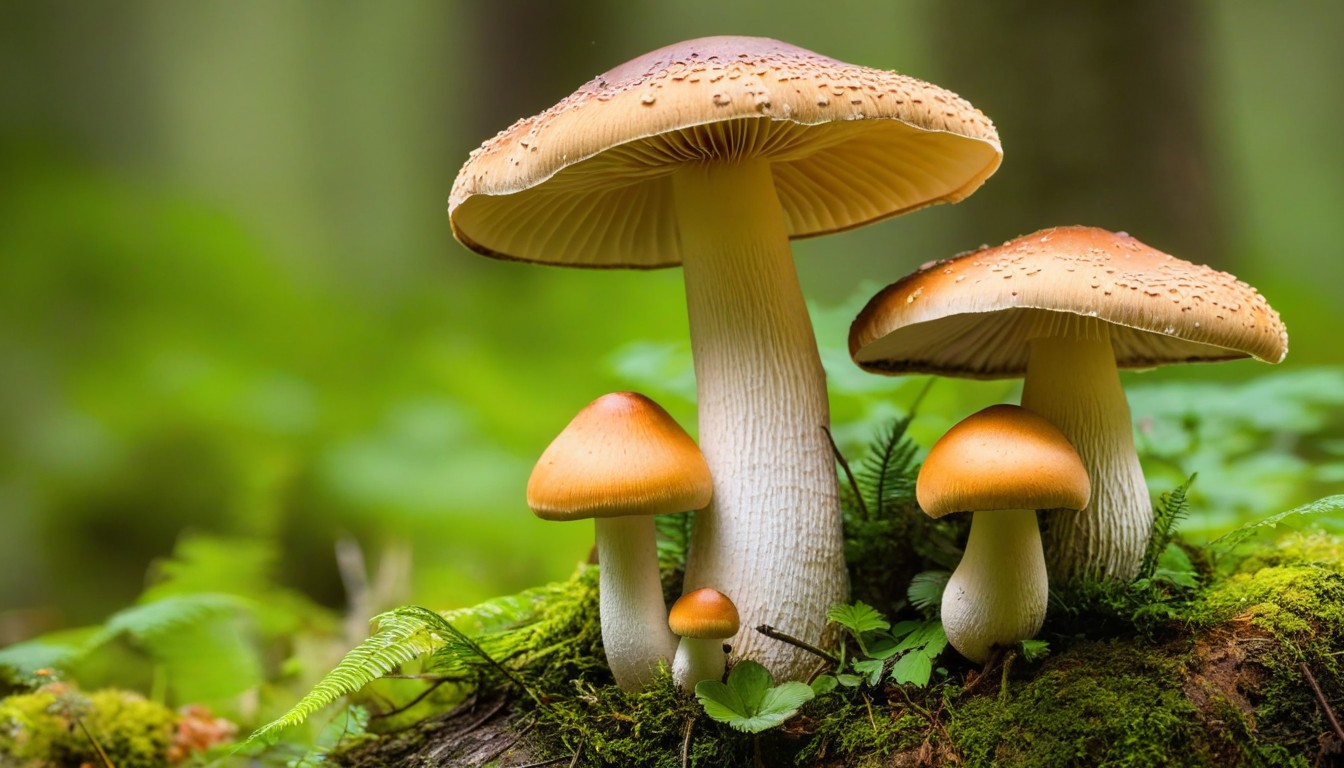
While Michigan is known for its popular mushrooms like Morels and Chanterelles, the state is also home to a variety of lesser-known edible mushrooms with unique flavors and characteristics. Below we’ll explore three of these hidden gems and where to find them.
Chicken of the Woods
(Laetiporus sulphureus)
With its bright orange and yellow colors, this mushroom looks like a small chicken breast, hence the name. Chicken of the Woods has a soft and spongy texture and a flavor similar to chicken or lobster. It can be found growing on the side of trees or logs in Michigan’s hardwood forests from summer to fall.
|
Common Name |
Scientific Name |
Best Time to Harvest |
Harvesting Tips |
|---|---|---|---|
|
Chicken of the Woods |
Laetiporus sulphureus |
Summer to fall |
Harvest when young and tender; avoid older, tougher specimens |
Lion’s Mane
(Hericium erinaceus)
Lion’s Mane is a white, shaggy mushroom that resembles a lion’s mane. It has a unique texture, similar to that of crab or lobster meat, and a mild, sweet flavor. Lion’s Mane mushrooms can be found growing on dead or dying trees in Michigan’s hardwood forests from late summer to early winter.
|
Common Name |
Scientific Name |
Best Time to Harvest |
Harvesting Tips |
|---|---|---|---|
|
Lion’s Mane |
Hericium erinaceus |
Late summer to early winter |
Harvest when young and tender; avoid older, tough specimens |
Bear’s Head Tooth
(Hericium americanum)
This tooth-like mushroom has a white, hairy appearance, resembling a bear’s head. It has a crunchy texture and a slightly sweet, nutty flavor. Bear’s Head Tooth mushrooms can be found growing on dead or dying trees in Michigan’s hardwood forests from late summer to fall.
|
Common Name |
Scientific Name |
Best Time to Harvest |
Harvesting Tips |
|---|---|---|---|
|
Bear’s Head Tooth |
Hericium americanum |
Late summer to fall |
Harvest when young and tender; avoid older, tough specimens |
Keep in mind that while these mushrooms are edible and safe to consume when properly identified, it’s vital to exercise caution and always double-check identification before consuming any wild mushrooms.
Tips for Successful Mushroom Foraging in Michigan
Foraging for mushrooms in Michigan can be a rewarding experience when done safely and proficiently. Here are some tips to help you have a successful mushroom foraging journey in Michigan:
- Research: Make sure you properly research the different types of edible mushrooms in Michigan before heading out. Familiarize yourself with their unique features, the locations where they grow, and the best time to find them.
- Seasonal Variations: Different types of mushrooms thrive in different seasons, so it’s essential to understand the seasonal variations in Michigan. For instance, Morels are usually found in the spring, while Hen of the Woods and Chanterelles can be discovered in the fall.
- Location: Look for areas with a variety of trees, particularly oak, ash, and maple trees, as they are known to host the most mushroom varieties in Michigan.
- Identification: It’s critical to be able to properly identify the mushrooms you come across. Identify the mushrooms based on their unique physical attributes, habitat, and any associated poisonous look-alikes.
- Sustainable Harvesting: Always practice sustainable harvesting methods by only picking mature mushrooms and leaving any immature ones to grow and multiply.
- Ask for Expert Advice: If you’re unsure about a specific mushroom’s authenticity, ask for help from an experienced forager or a mycologist to identify the species.
By following these tips, you can enhance your knowledge of mushroom foraging in Michigan, be safe, and gather an impressive harvest of edible mushrooms.
Conclusion
Michigan’s forests are a treasure trove of edible mushrooms waiting to be discovered by adventurous foragers. With this comprehensive guide, you’ve gained a better understanding of the diverse types of mushrooms that grow in Michigan’s terrain, safe foraging practices, and prime locations for fruitful foraging.
Whether you’re a seasoned forager or a beginner, armed with knowledge and a keen eye, you’ll be able to embark on a successful mushroom hunt in Michigan’s forests. Remember to always prioritize your safety and the sustainability of our natural resources.
So, what are you waiting for? It’s time to get out there, explore the magic of Michigan’s forests, and savor the delicious flavors of its edible mushrooms. Happy foraging!
FAQ
Can all mushrooms in Michigan be safely consumed?
No, not all mushrooms in Michigan are safe to consume. It is important to accurately identify edible mushrooms and avoid consuming poisonous varieties.
Are there any poisonous mushrooms that resemble edible mushrooms in Michigan?
Yes, there are some poisonous mushrooms in Michigan that can resemble edible mushrooms. It is crucial to be familiar with the distinguishing characteristics of edible mushrooms and be cautious when foraging.
What are the best practices for safely foraging mushrooms in Michigan?
Some best practices for safe mushroom foraging in Michigan include thoroughly researching and identifying mushrooms, consulting expert guides or experienced foragers, and only harvesting mushrooms that you are confident are edible.
Are there any regulations or permits required for mushroom foraging in Michigan?
It is important to familiarize yourself with any specific regulations or permits related to mushroom foraging in Michigan. Some areas, such as state parks or national forests, may have their own guidelines or restrictions.
Where can I find more information about edible mushrooms in Michigan?
There are several resources available for learning about edible mushrooms in Michigan, including field guides, online forums, and local mycological societies. These can provide valuable information and assistance in identifying and foraging mushrooms safely.

